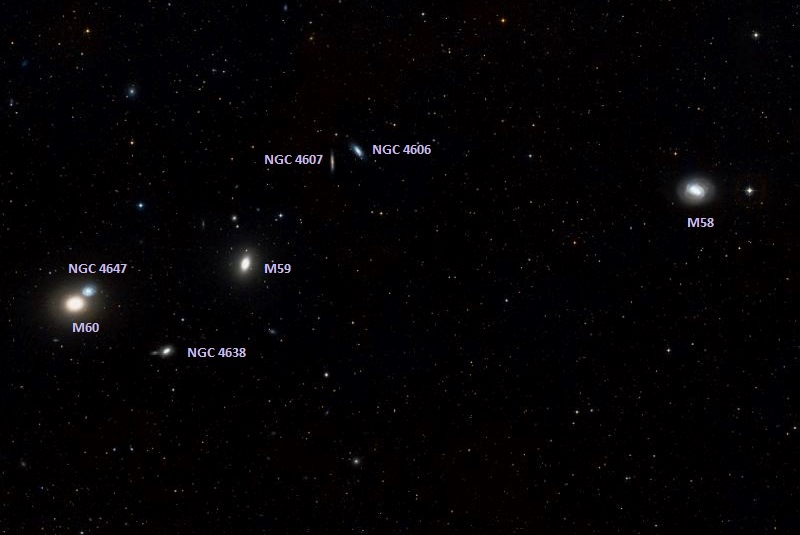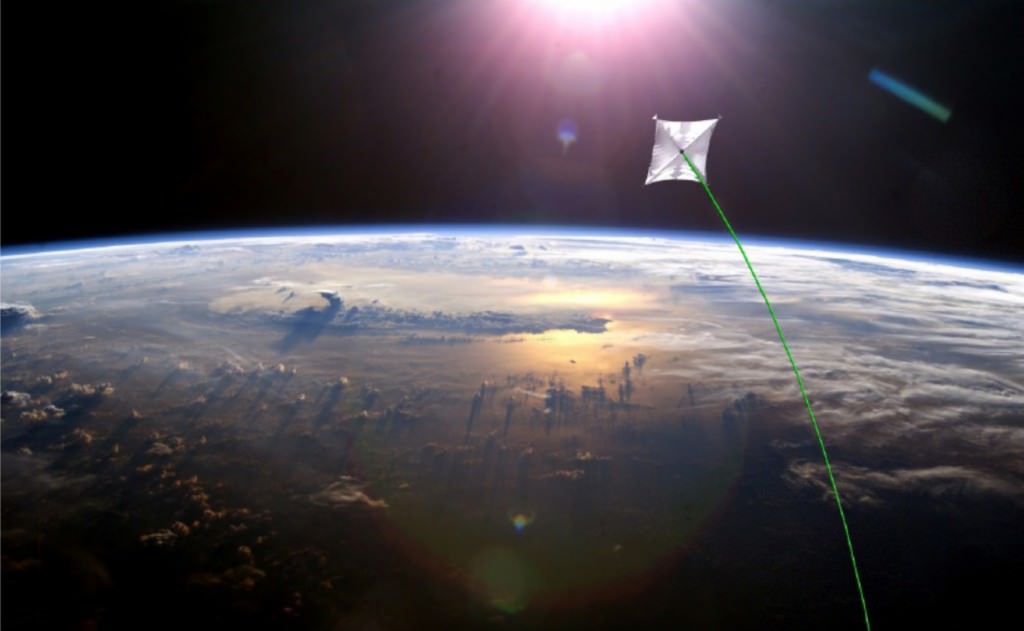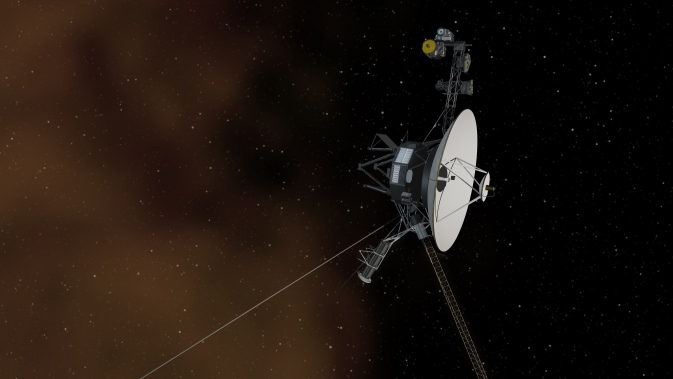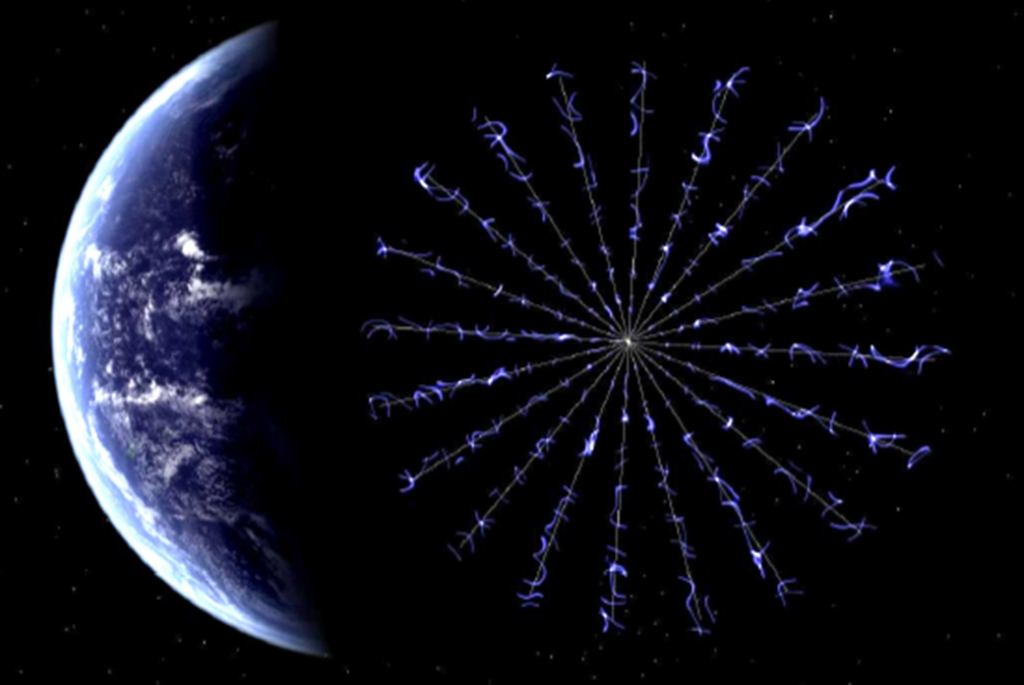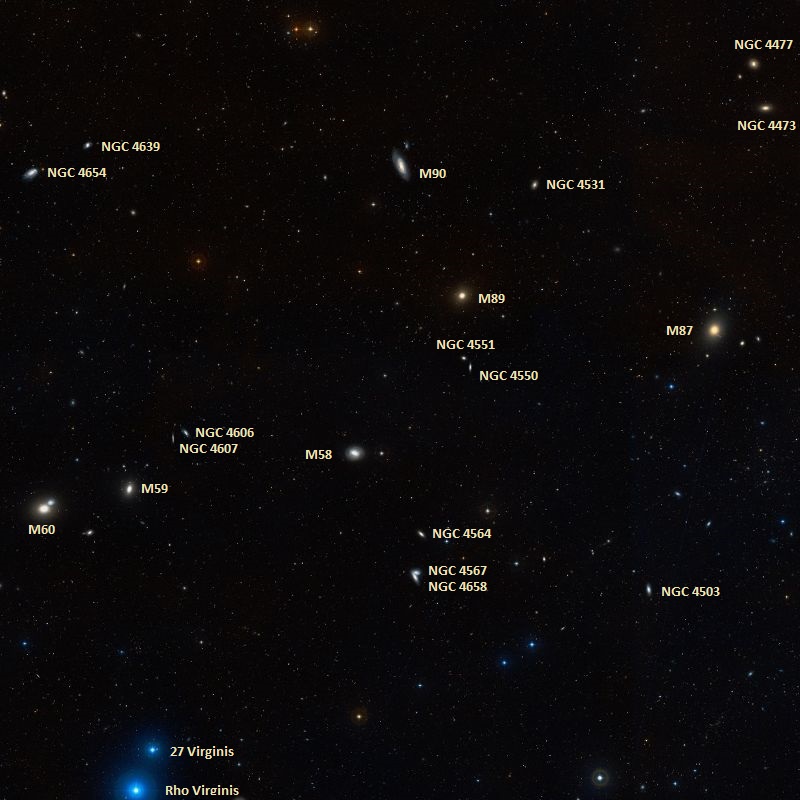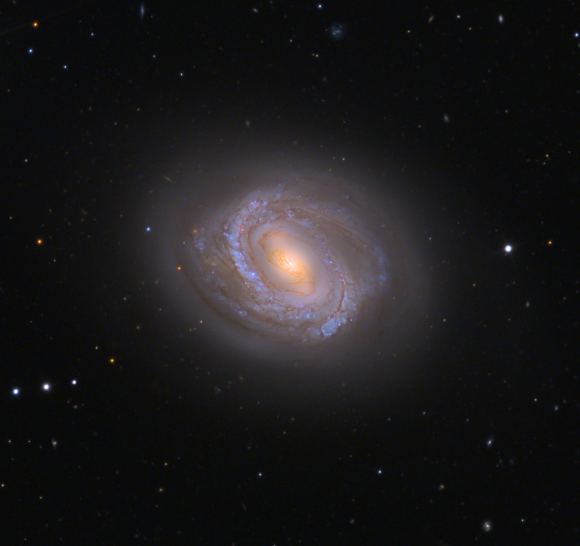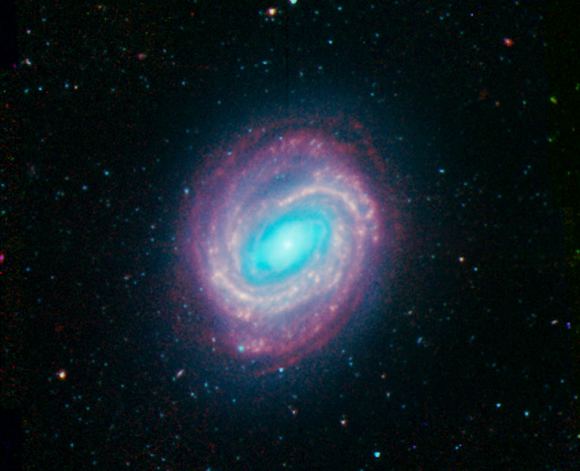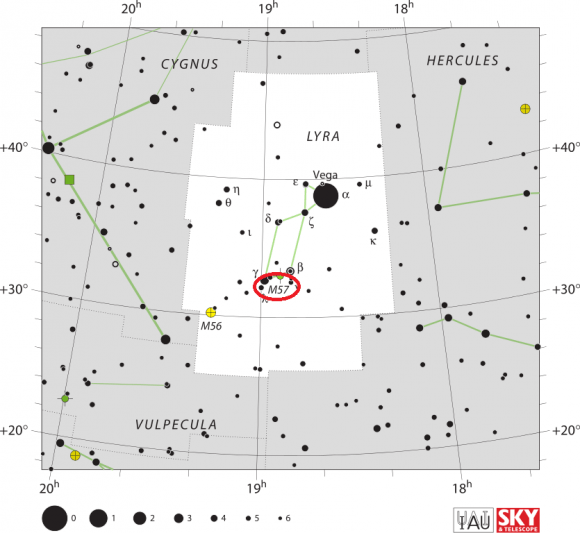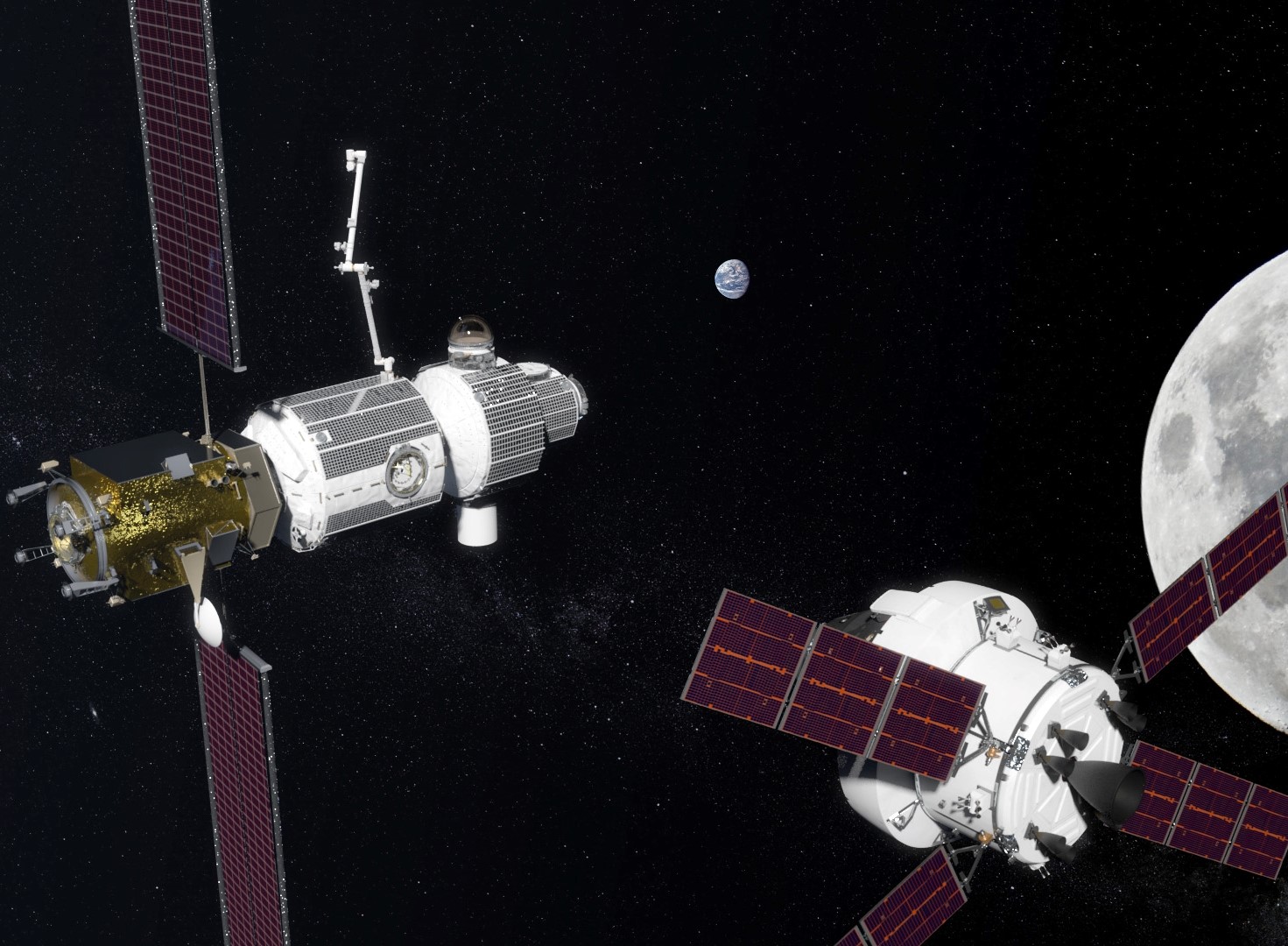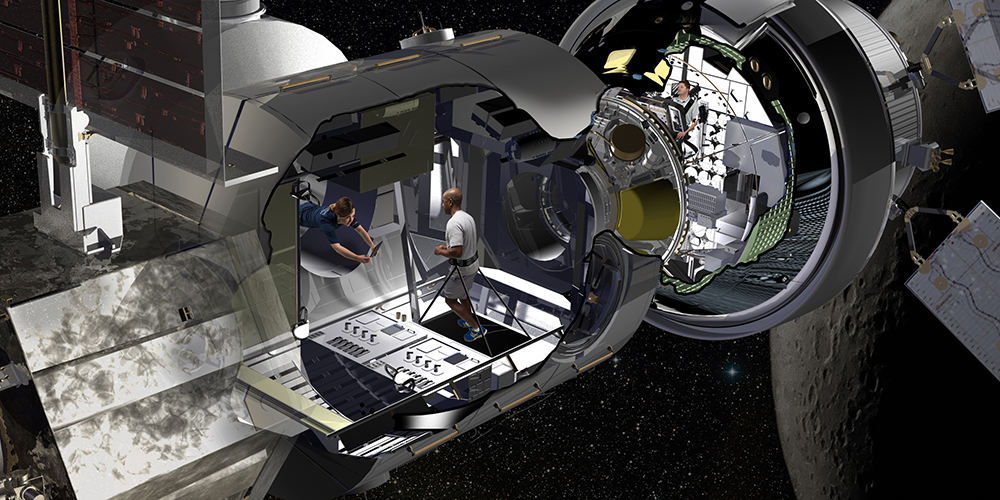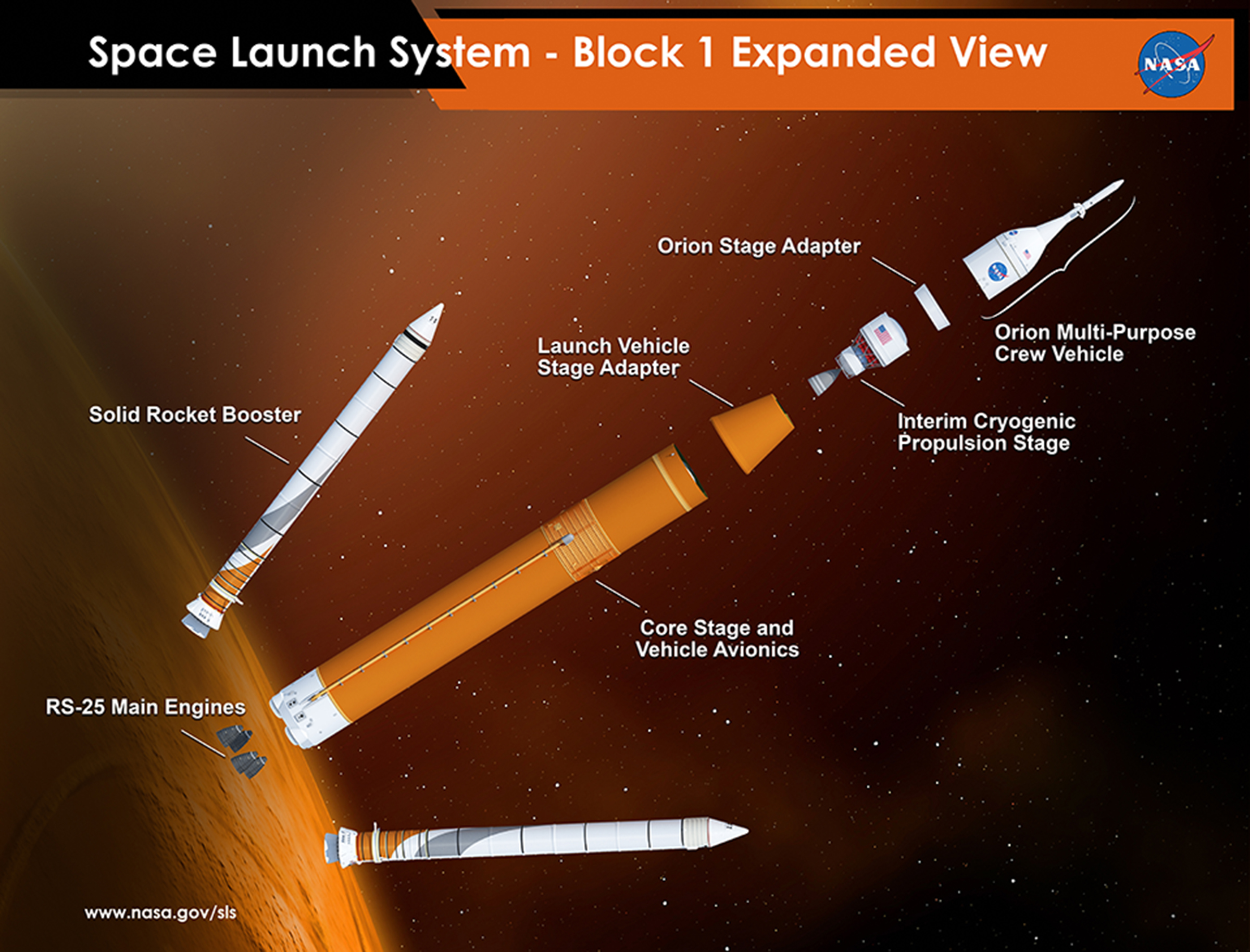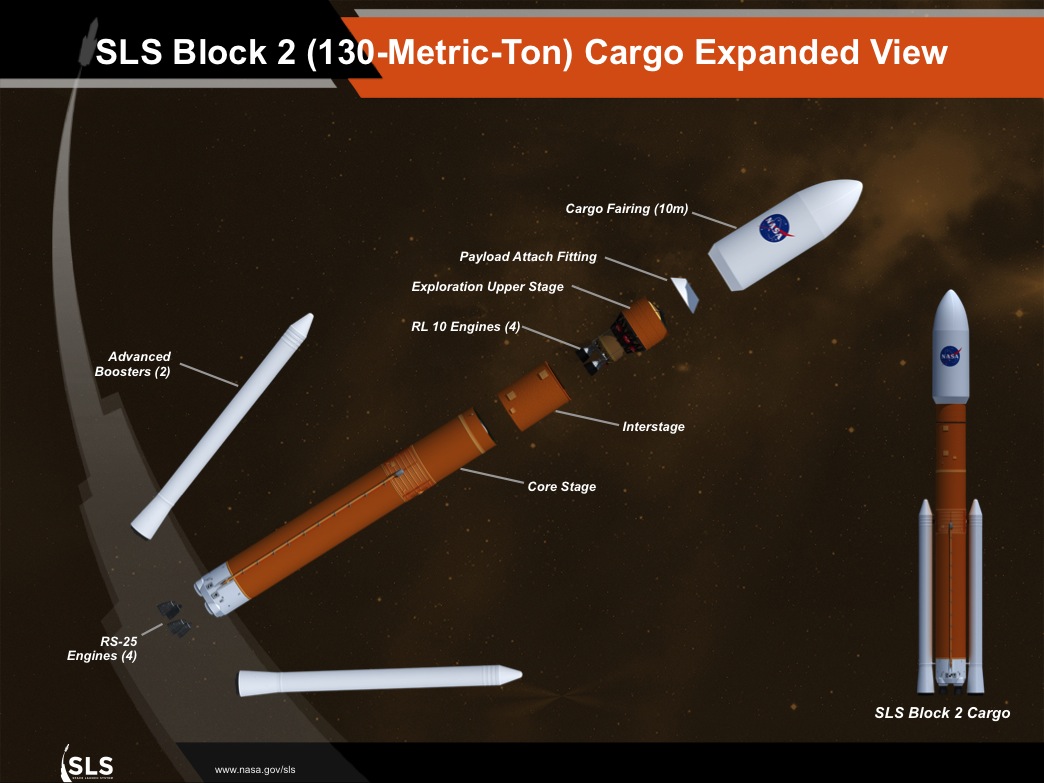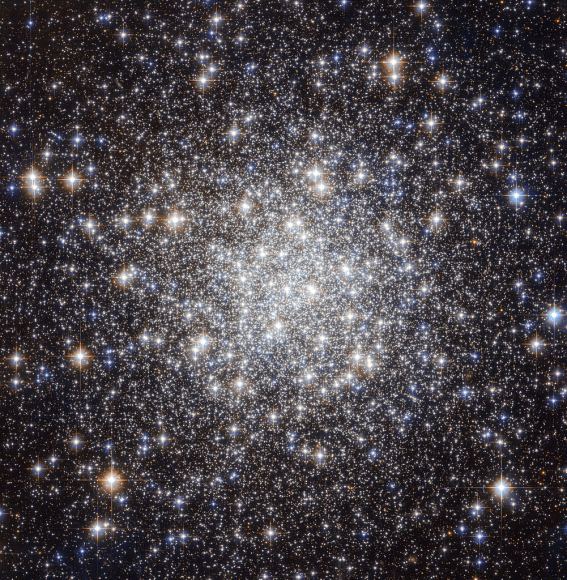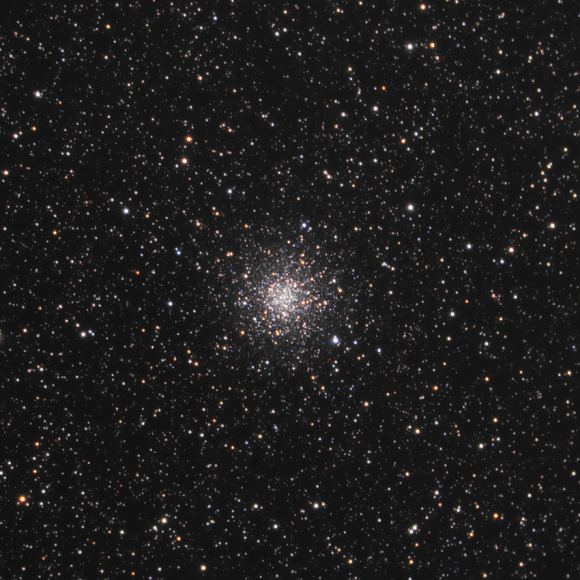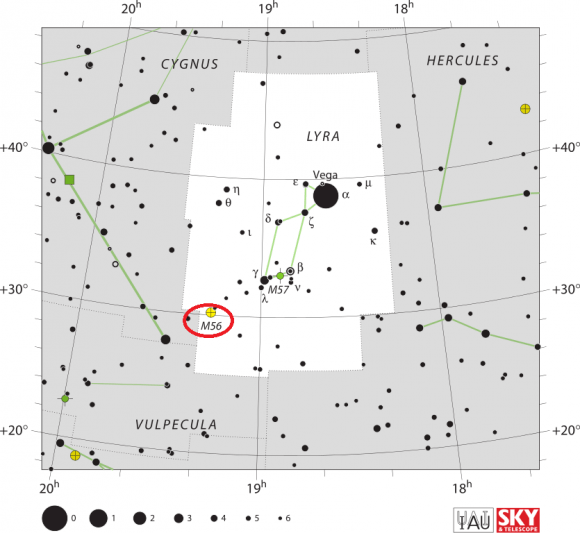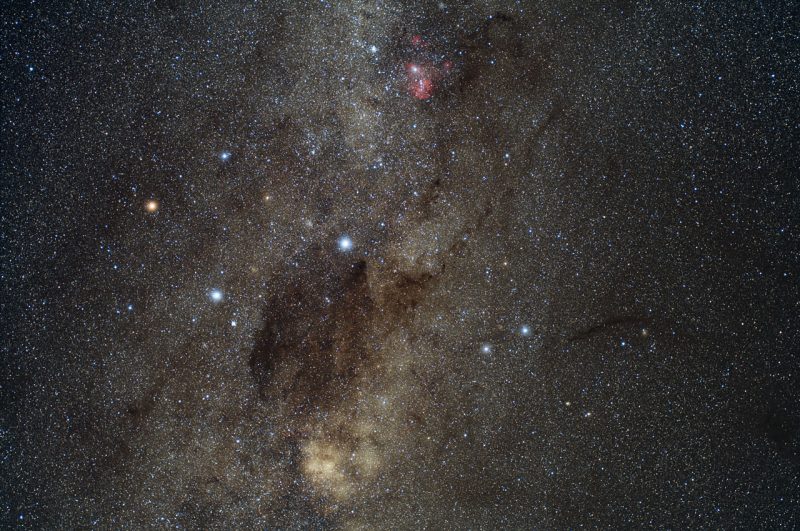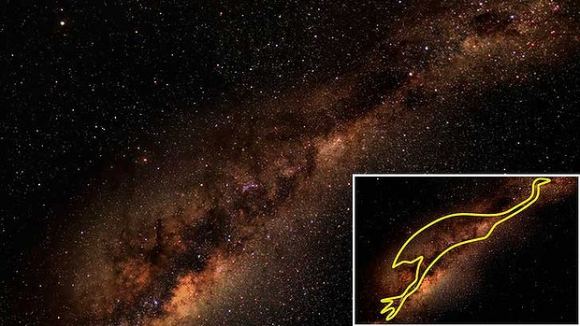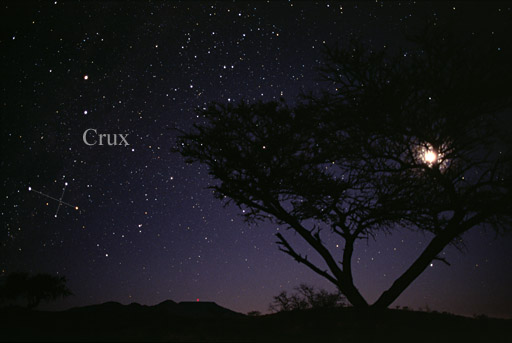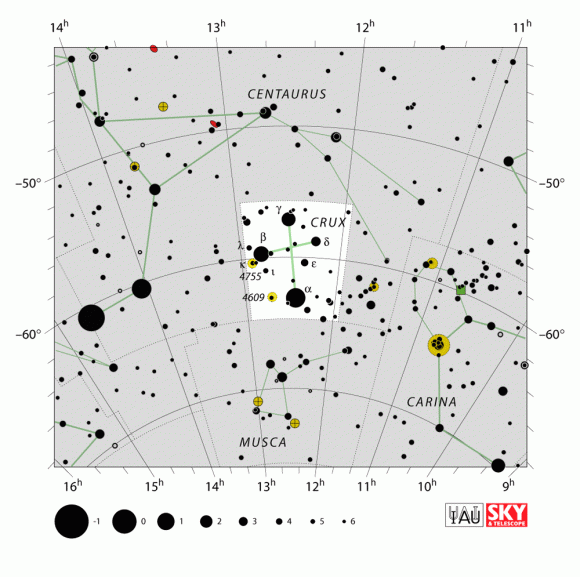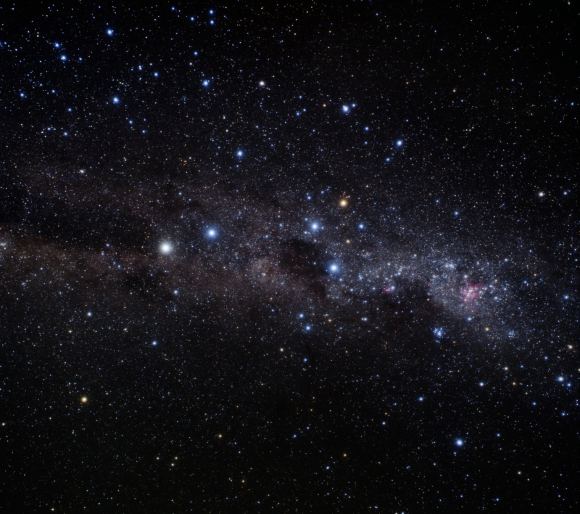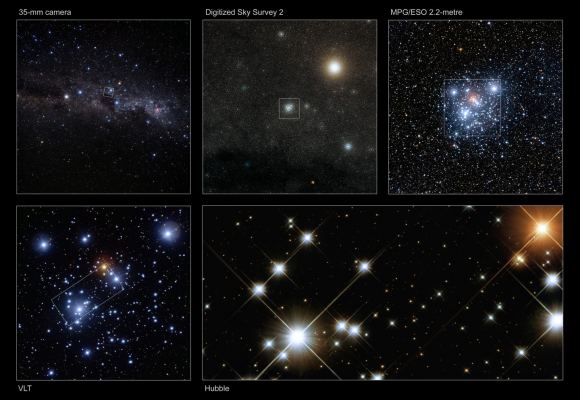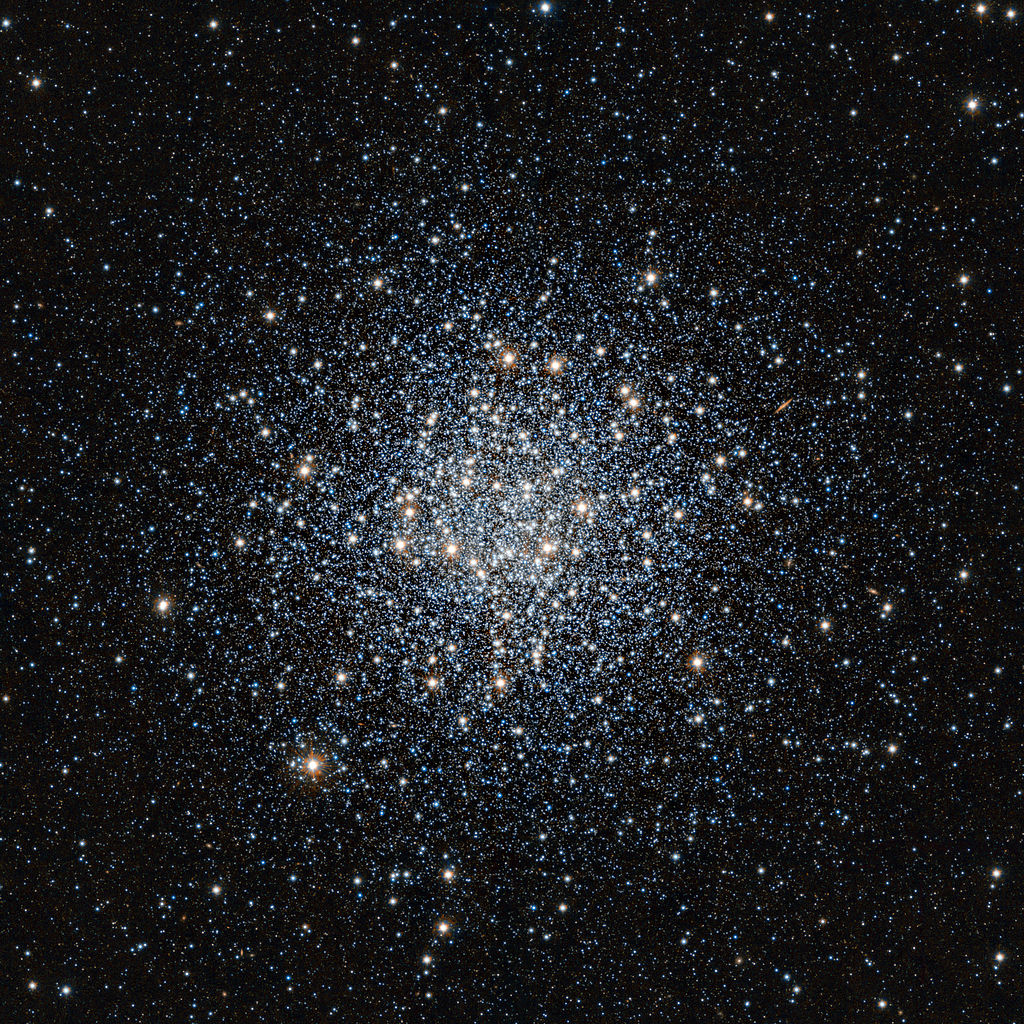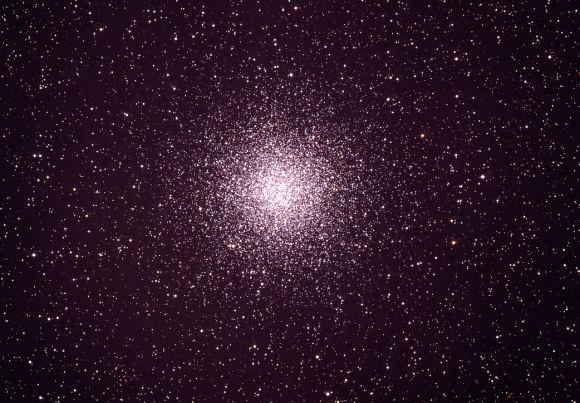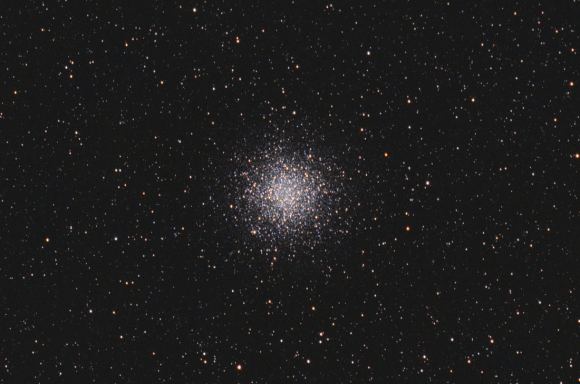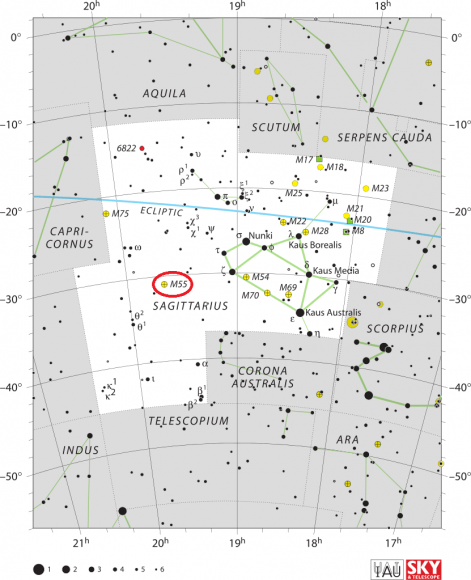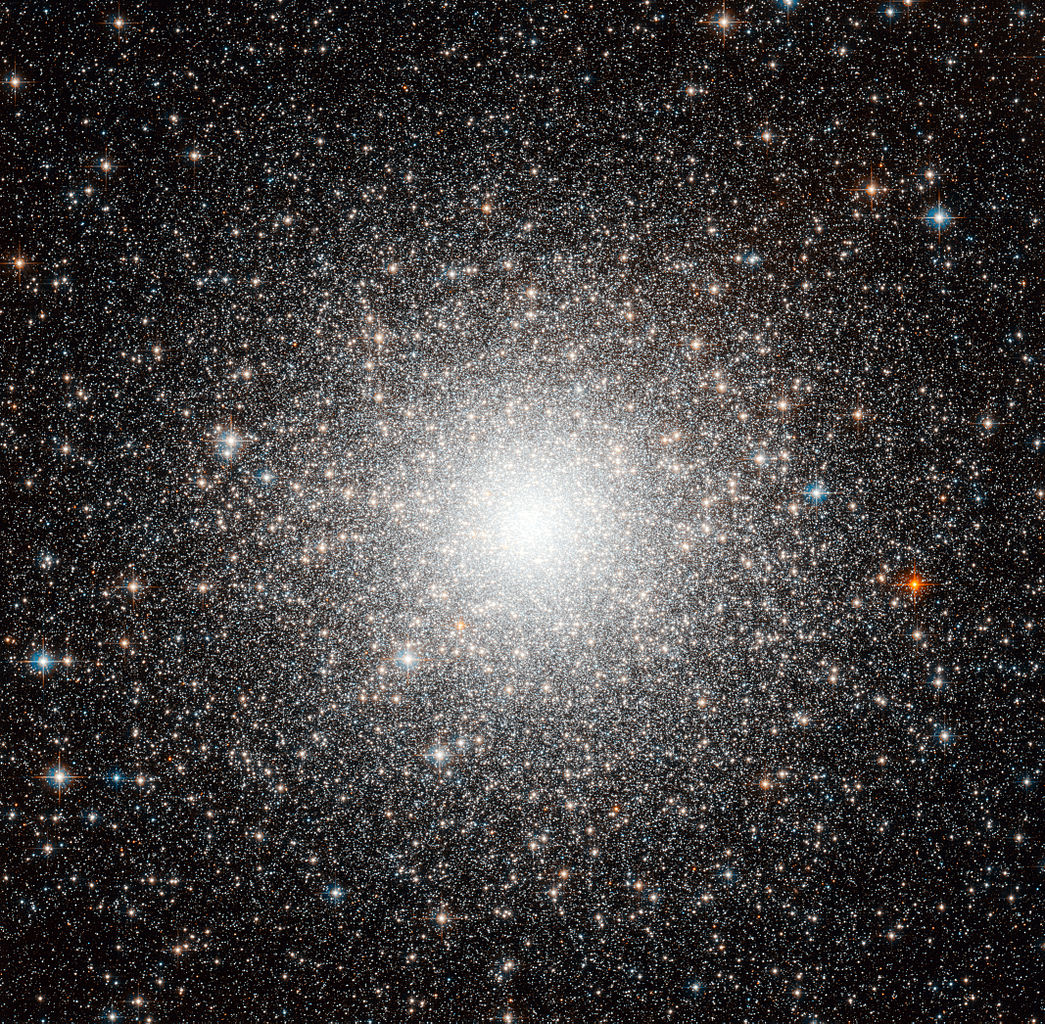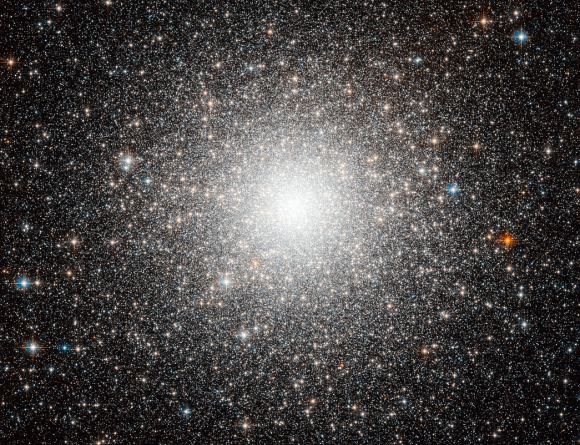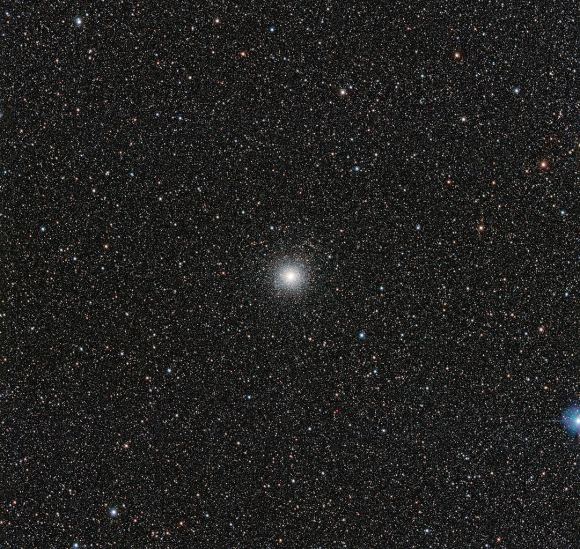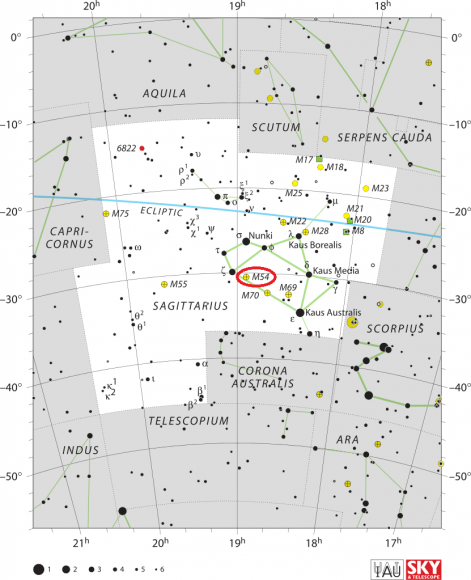Welcome back to Messier Monday! Today, we continue in our tribute to our dear friend, Tammy Plotner, by looking at the spiral galaxy known as Messier 59.
In the 18th century, while searching the night sky for comets, French astronomer Charles Messier kept noting the presence of fixed, diffuse objects he initially mistook for comets. In time, he would come to compile a list of approximately 100 of these objects, hoping to prevent other astronomers from making the same mistake. This list – known as the Messier Catalog – would go on to become one of the most influential catalogs of Deep Sky Objects.
One of these objects is the elliptical galaxy known as Messier 59 (aka. NGC 4621). This galaxy is located approximately 60 million light-years from Earth in the direction of the southern Virgo constellation. Sitting just a few degrees away Messier 60, and bordered at a distance by Messier 58, this galaxy is visible using smaller instruments, but is best observed using a larger telescope.
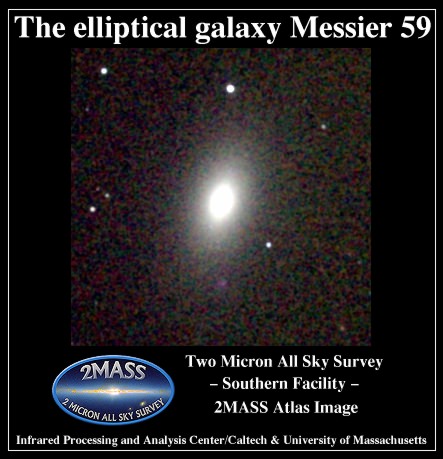
Description:
Located about 60 million light years away and spanning about 90 million light years of space, but what exactly is its type? Says Takao Mizuno (et al) in their 1996 study:
“We decomposed two-dimensionally an elliptical galaxy, NGC 4621, which shows deviations from the brightness distribution law. We have found that its brightness distribution can be reproduced by three components possessing constant ellipticities of the residuals in the circular region of radius. The component obeying the aw has 62% of the total light, and, hence, is the main body of this elliptical galaxy.” So it might not be the biggest or the brightest of the group, but it is home to nearly 2000 globular clusters. This isn’t news when it comes to this galaxy type, but what is news is how they rotate… the wrong way!
“We present adaptive optics assisted OASIS integral field spectrography of the S0 galaxy NGC 4621. Two-dimensional stellar kinematical maps (mean velocity and dispersion) reveal the presence of a 60 pc diameter counter-rotating core (CRC), the smallest observed to date.” says Fabien Wernli (et al), “The OASIS data also suggests that the kinematic center of the CRC is slightly offset from the center of the outer isophotes. This seems to be confirmed by archival HST/STIS data. We also present the HST/WFPC2 V-I colour map, which exhibits a central elongated red structure, also slightly off-centered in the same direction as the kinematic centre. Although the stellar velocities are reasonably fitted, including the region of the counter-rotating core, significant discrepancies between the model and the observations demonstrate the need for a more general model.”
What could account for such unusual behavior? Try a quiet black hole! As J. M. Wrobel (et al) indicated in their 2008 study:
“The nearby elliptical galaxies NGC 4621 and NGC 4697 each host a supermassive black hole. Analysis of archival Chandra data and new NRAO Very Large Array data shows that each galaxy contains a low-luminosity active galactic nucleus (LLAGN), identified as a faint, hard X-ray source that is astrometrically coincident with a faint 8.5-GHz source. The black holes energizing these LLAGNs have Eddington ratios placing them in the so-called quiescent regime. The emission from these quiescent black holes is radio-loud, suggesting the presence of a radio outflow. Also, application of the radio-X-ray-mass relation from Yuan & Cui for quiescent black holes predicts the observed radio luminosities to within a factor of a few. Significantly, that relation invokes X-ray emission from the outflow rather than from an accretion flow. The faint, but detectable, emission from these two massive black holes is therefore consistent with being outflow-dominated.”
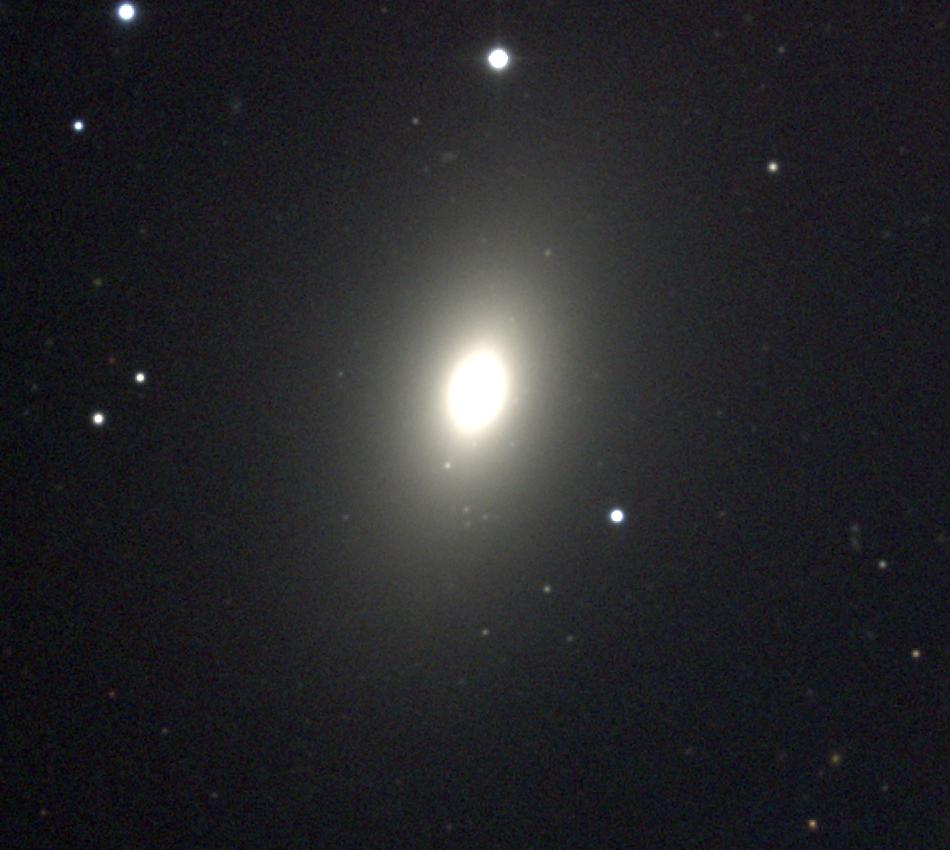
History of Observation:
Both M59 and neighboring M60 were discovered on April 11, 1779 by Johann Gottfried Koehler who wrote: “Two very small nebulae, hardly visible in a 3-foot telescope: The one above the other.” Charles Messier would independently recover it four days later and state in his notes:
“Nebula in Virgo and in the neighborhood of the preceding [M58], on the parallel of epsilon [Virginis], which has served for its [position] determination: it is of the same light as the above, equally faint. M. Messier reported it on the Chart of the Comet of 1779.”
While both William and John Herschel would also observe it, it sometimes confounds me that they didn’t seem to notice all the other galaxies around it! Fortunately for historic record, Admiral Smyth did:
“A fine field is exhibited under the eye-piece, which magnifies 93 times, just as this object [M60 with NGC 4647] enters, because the bright little nebula 59 M. is quitting the np [north preceding, NW] verge, and another small one is seen in the upper part, H. 1402 [NGC 4638]: in fact, four nebulae at once.”
Locating Messier 58:
M59 is a telescope-only object and requires patience to find. Because the Virgo Galaxy field contains so many galaxies which can easily be misidentified, it is sometimes easier to “hop” from one galaxy to the next. In this case, we need to start by locating bright Vindemiatrix (Epsilon Virginis) almost due east of Denebola. Then starhop four and a half degrees west and a shade north of Epsilon to locate one of the largest elliptical galaxies presently known – M60.
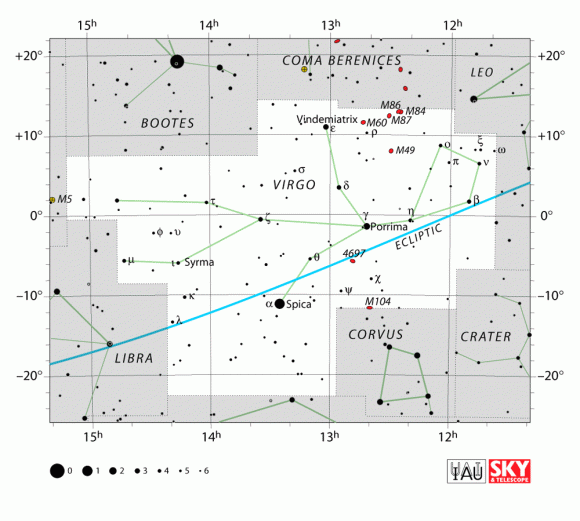
At a little brighter than magnitude 9, this galaxy could be spotted with binoculars, but stick with your telescope. In the same low power field (depending on aperture size) you may also note faint NGC 4647 which only appears to be interacting with M60. Also in the field to the west (the direction of drift) is the Messier we’re looking for, bright cored elliptical galaxy M59.
In a smaller telescope, do not expect to see much. What will appear at low power is a tiny egg-shaped patch of contrast change with a brighter center. As aperture increases, a sharper nucleus will begin to appear as you move into the 4-6″ size range at dark sky locations, but elliptical galaxies do not show details. As with all galaxies, dark skies are a must!
Enjoy your journey around the Virgo Galaxy Field!
Object Name: Messier 59
Alternative Designations: M59, NGC 4621
Object Type: E5 Galaxy
Constellation: Virgo
Right Ascension: 12 : 42.0 (h:m)
Declination: +11 : 39 (deg:m)
Distance: 60000 (kly)
Visual Brightness: 9.6 (mag)
Apparent Dimension: 5×3.5 (arc min)
We have written many interesting articles about Messier Objects here at Universe Today. Here’s Tammy Plotner’s Introduction to the Messier Objects, M1 – The Crab Nebula, and David Dickison’s articles on the 2013 and 2014 Messier Marathons.
Be to sure to check out our complete Messier Catalog. And for more information, check out the SEDS Messier Database.
Sources:

